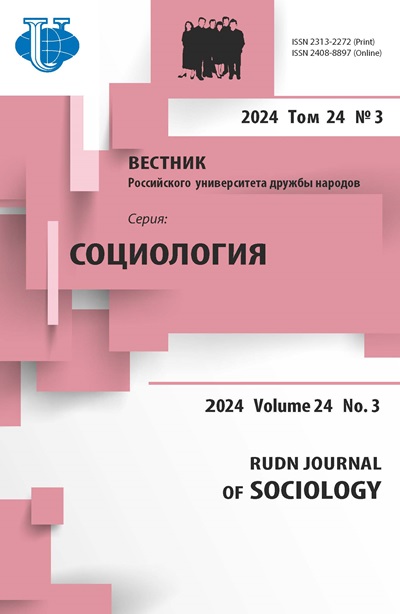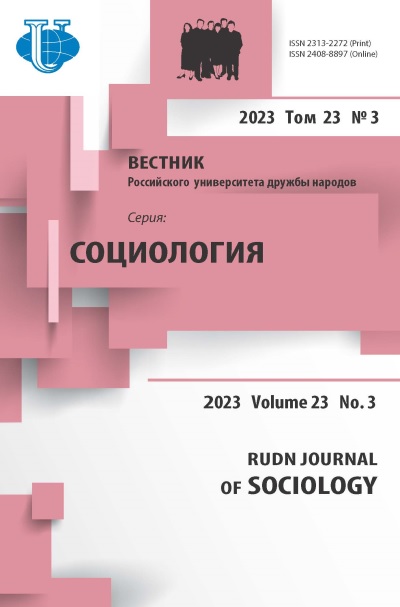Russia and Mongolia in the civilizational and geopolitical paradigms of Central Eurasia development
- Authors: Zheleznyakov A.S.1, Chuluunbaatar G.2
-
Affiliations:
- Institute of Sociology of FCTAS RAS
- Mongolian Academy of Sciences
- Issue: Vol 23, No 3 (2023)
- Pages: 612-622
- Section: Sociological lectures
- URL: https://journals.rudn.ru/sociology/article/view/36340
- DOI: https://doi.org/10.22363/2313-2272-2023-23-3-612-622
- EDN: https://elibrary.ru/VNNLGI
Cite item
Full Text
Abstract
The relationship between Russia and Mongolia in the civilizational and geo-political paradigms of Central Eurasia development is extremely important for political science, sociology and regional studies. The authors’ definition of Central Eurasia differs from the generally accepted neutral interpretation due to its connection with a specific civilizational space - three local civilizations - the historically summarized limits of their dominant influence. The article considers the following limits of the influence of the Mongolian, Russian and Chinese civilizations from ancient times to the present: the great steppe empires (from the state of the Xiongnu to the Great Mongol Empire of Genghis Khan) with the center in Mongolia, the Russian Empire and the socialist camp with the center in Russia (USSR), and the economic corridor Russia-Mongolia-China with centers in three countries. The recognition of the taxonomic equilibrium of Russia, China and Mongolia as the cores of the Russian, Chinese and Mongolian civilizations, united by the space of Central Eurasia, allows to reconsider the Russian-Mongolian relations from ancient times to the present. The authors admit the existence of the world civilization hidden in Inner Asia and based on more than two thousand years of the nomads’ written history - the Mongolian civilization. The authors develop a new scientific direction - civilizational political science which considers the interaction between societies through the intertwined civilizational world order. The authors believe that civilizations cover the entire global space; introduce the concept “cascade of the civilizational boundaries”, which requires a combination of modeling methods and geoinformation technologies with cultural-historical ideas; consider the historical tradition of relations between Russia, Mongolia and China in the Eurasian region as being revived in the new context of trilateral cooperation.
About the authors
A. S. Zheleznyakov
Institute of Sociology of FCTAS RAS
Author for correspondence.
Email: zhelezniakovas@yahoo.com
Krzhizahanovskogo St., 24/35-5, Moscow, 117218, Russia
G. Chuluunbaatar
Mongolian Academy of Sciences
Email: chuluunbaatargelegpil@gmail.com
Peace Av., 54b, Bayanzurkh district, Ulaanbaatar, 13330, Mongolia
References
- Abaev N.V. Tsivilizatsionnaya geopolitika i etnokulturnye traditsii narodov Tsentralnoy Azii i Altay-Baykalskogo regiona [Civilizational Geopolitics and Ethnocultural Traditions of the Peoples in Central Asia and the Altai-Baikal Region]. Kyzyl; 2006. (In Russ.).
- Zheleznyakov A.S. Mongolskaya tsivilizatsiya: istoriya i sovremennost. Teoreticheskoe obosnovanie atlasa [Mongolian Civilization: History and Modernity. Theoretical Explanation of the Atlas]. Moscow; 2016. (In Russ.).
- Inostrannye chleny Rossiyskoy akademii nauk XVIII–XXI vv.: Geologiya i gornye nauki [Foreign Members of the Russian Academy of Sciences in the 18th–21st Centuries: Geology and Mining Sciences]. Editor-in-chief L.O. Gliko. Vol. 3. Moscow; 2012. (In Russ.).
- Luzyanin S.G. Rossiya — Mongoliya — Kitay v pervoy polovine XXI v. Politicheskie vzaimootnosheniya v 1911–1946 gg. [Russia — Mongolia — China in the First Half of the 21st Century. Political Relations in 1911–1946]. Moscow; 2000. (In Russ.).
- Mikhalev M.S., Yakunin V.I., Vilisov M.V. Poyasa i puti Evrazii. V poiskah cheloveka [Belts and Paths of Eurasia. In Search of the Man]. Moscow; 2018. (In Russ.).
- Mongolsky mir: mezhdu Vostokom i Zapadom [Mongolian World: Between East and West]. Ed. by Yu.V. Popkov, Zh. Amarsany. Novosibirsk; 2014.
- Rashid Ad Din. Sudryn chuulgan [Sudrin Conference]. Ulaanbaatar; 2000. (In Mongolian).
- Rol kochevyh narodov v tsivilizatsii Tsentralnoy Azii [The Role of Nomadic Peoples in the Civilization of Central Asia]. Ulaanbaatar; 1974. (In Mongolian).
- Rossiya — Mongoliya: kulturnaya identichnost i mezhkulturnoe vzaimodeystvie [Russia — Mongolia: Cultural Identity and Intercultural Interaction]. Ed. by V.M. Dianova. Saint Petersburg; 2011. (In Russ.).
- Trubetskoy N.S. Istoriya. Kultura. Yazyk [History. Culture. Language]. Moscow; 1995. (In Russ.).
- Khashbat L. Mezhdunarodny status Mongolii: istoriko-pravovye aspekty [International Status of Mongolia: Historical-Legal Aspects]. Ulaanbaatar; 2001. (In Russ.).
- Tsentralnaya Evraziya. Territoriya mezhkulturnyh kommunikatsiy [Central Eurasia. Territory of Intercultural Communications]. Ed. and comp. by A.K. Alikberov. Moscow; 2020. (In Russ.).
- Yaskina G.S. Mongoliya i vneshny mir [Mongolia and the Outside World]. Moscow; 2002. (In Russ.).
- Ewing T.E. Between the Hummer and the Anvil? Chinese and Russian Policies in Outer Mongolia, 1911–1921. Bloomington; 1980.
- Atwood C.P. Is there such a thing as Central/Inner (Eur)Asia and is Mongolia a part of it? Pacific Affairs. 2012; 85 (3).
- Sabloff L.W. Mapping Mongolia: Situating Mongolia in the world from geologic time to the present. Pacific Affairs. 2012; 85 (3).
- Mongolia and Western China: Social and Economic Study. Tientsin; 1979.
- Mongol Ulsyn tuuh. Eronhiy suur bolovsrol ezemshikhed zoriulsan ih surguu-lin surakh bichig. Hoyor dah hevlel. Еd. by P. Delgerzhargal, B. Chinzorig, J. Boldbaatar. Ulaanbaatar; 2017. (In Mongolian).
- Trubetskoy N.S. Legacy of Genghis Khan. A Look at the Russian History not from the West, but from the East. Ulaanbaatar; 2015. (In Mongolian).














